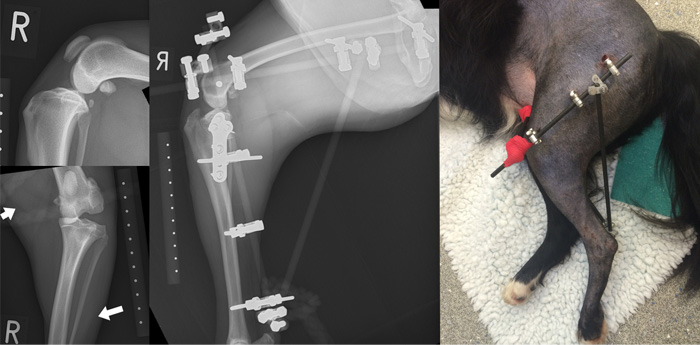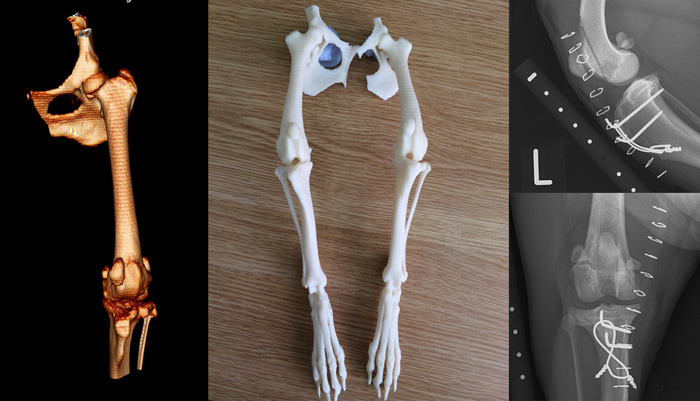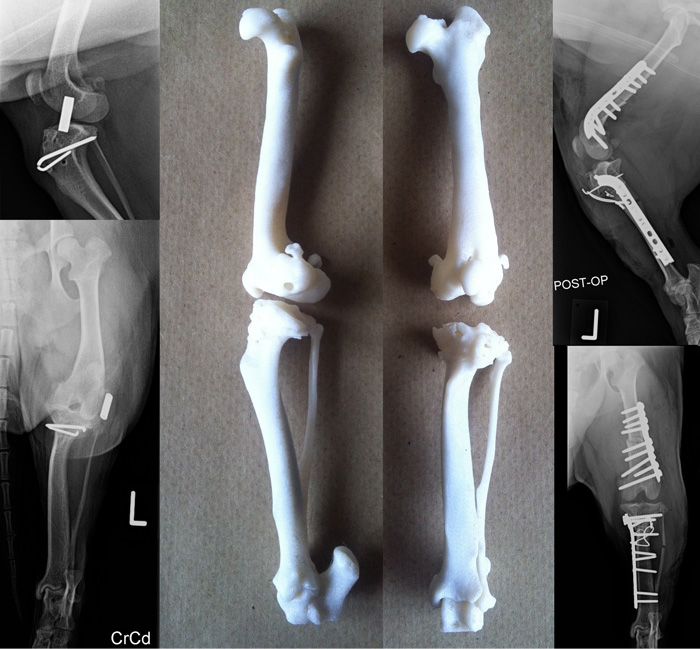Cruciate ligament disease
Cranial cruciate ligament disease is common, causing lameness and osteoarthritis of the stifle (knee) joint. At Wear Referrals in County Durham, we treat this condition with Tibial Plateau Levelling Osteotomy (TPLO). The evidence base supports this surgery as offering a superior clinical result to other techniques.
 Cranial cruciate and lateral collateral ligament injury in a 4-year male working collie. The cruciate rupture was stabilised with a TPLO, and the collateral ligament with a bone anchor and suture. The repair was protected for 4 weeks postoperatively with a transarticular fixator. The dog returned to work 14 weeks following surgery.
Cranial cruciate and lateral collateral ligament injury in a 4-year male working collie. The cruciate rupture was stabilised with a TPLO, and the collateral ligament with a bone anchor and suture. The repair was protected for 4 weeks postoperatively with a transarticular fixator. The dog returned to work 14 weeks following surgery.
Patella luxation
Patella (kneecap) luxation is a common cause of lameness, especially in small-breed dogs. This condition is commonly corrected by deepening the groove the patella should run in, coupled with tightening or loosening the soft tissues and transposing the tibial tuberosity. Less frequently, if significant deformity is present in the femur or tibia, corrective osteotomy of the bone can be performed.
 Patella Luxation - Before
Patella Luxation - Before
 Medial patella luxation and cruciate rupture that has been unsuccessfully stabilised. A closing wedge ostectomy of the proximal tibia with concurrent valgus deformity and distal femoral osteotomies were performed to stabilise the stifle joint and straighten the limb.
Medial patella luxation and cruciate rupture that has been unsuccessfully stabilised. A closing wedge ostectomy of the proximal tibia with concurrent valgus deformity and distal femoral osteotomies were performed to stabilise the stifle joint and straighten the limb.






